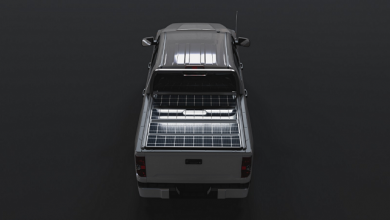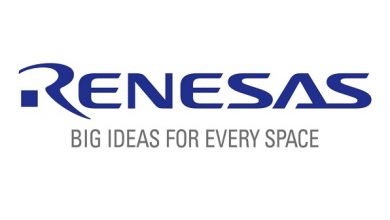Global Electric Vehicle Battery Market 2021-2024 with profiles of Samsung Sdi, Quallion, Boston-Power, and LG Chem Power

The “Technology Landscape, Trends and Opportunities in the Global Electric Vehicle Battery Market” report has been added to ResearchAndMarkets.com’s offering.
The technologies in electric vehicle battery have undergone significant change in recent years, with non-rechargeable to rechargeable electric vehicle batteries. The rising wave of new technologies, such as nickel-cadmium batteries, nickel-metal hydride batteries, sodium-nickel chloride batteries, and lithium-ion batteries are creating significant potential for electric vehicle battery applications due to reduced emission, betterment for the environment, health benefits, and safety improvements.
In this market, various technologies, such as lead-acid battery, nickel-cadmium battery, nickel-metal hydride battery, sodium-nickel chloride battery, and lithium-ion battery technologies, are used in battery electric vehicles, hybrid electric vehicles, and plug-in hybrid electric vehicles. Growing demand for zero emission vehicles and decreasing cost of electric vehicle battery systems are creating opportunities for various electric vehicle battery technologies.
This report analyzes technology maturity, degree of disruption, competitive intensity, market potential, and other parameters of various technologies in the electric vehicle battery market.
The study includes technology readiness, competitive intensity, regulatory compliance, disruption potential, trends, forecasts and strategic implications for the global electric vehicle battery technology by application, technology, and region.
Some of the electric vehicle battery companies profiled in this report include Samsung Sdi, Quallion, Boston-Power, and LG Chem Power.
This report answers the following 9 key questions:
- Q.1 What are some of the promising and high-growth technology opportunities for the electric vehicle battery market?
- Q.2 Which technology will grow at a faster pace and why?
- Q.3 What are the key factors affecting dynamics of different technologies? What are the drivers and challenges of these technologies in electric vehicle battery market?
- Q.4 What are the levels of technology readiness, competitive intensity and regulatory compliance in this technology space?
- Q.5 What are the new technology developments in electric vehicle battery market? Which companies are leading these developments?
- Q.6 What are the latest developments in electric vehicle battery technologies? Which companies are leading these developments?
- Q.7 Which technologies have potential of disruption in this market?
- Q.8 Who are the major players in this electric vehicle battery market? What strategic initiatives are being implemented by key players for business growth?
- Q.9 What are strategic growth opportunities in this electric vehicle battery technology space?
Key Topics Covered:
1. Executive Summary
2. Technology Landscape
2.1. Technology Background and Evolution
2.2. Technology and Application Mapping
2.3. Supply Chain
3. Technology Readiness
3.1. Technology Commercialization and Readiness
3.2. Drivers and Challenges in Electric Vehicle Battery Technologies
3.3. Competitive Intensity
3.4. Regulatory Compliance
4.Technology Trends and Forecasts Analysis from 2013-2024
4.1. Electric Vehicle Battery Opportunity
4.2. Technology Trends (2013-2018) and Forecasts (2019-2024)
4.2.1. Lead-Acid Battery
4.2.2. Nickel-Cadmium Battery
4.2.3. Nickel-Metal Hydride Battery
4.2.4. Sodium-Nickel Chloride Battery
4.2.5. Lithium-Ion Battery
4.3. Technology Trends (2013-2018) and Forecasts (2019-2024) by Application Segments
4.3.1. Battery Electric Vehicle
4.3.1.1. Lead-Acid Battery
4.3.1.2. Nickel-Cadmium Battery
4.3.1.3. Nickel-Metal Hydride Battery
4.3.1.4. Sodium-Nickel Chloride Battery
4.3.1.5. Lithium-Ion Battery
4.3.2. Hybrid Electric Vehicle
4.3.2.1. Lead-Acid Battery
4.3.2.2. Nickel-Cadmium Battery
4.3.2.3. Nickel-Metal Hydride Battery
4.3.2.4. Sodium-Nickel Chloride Battery
4.3.2.5. Lithium-Ion Battery
4.3.3. Plug-in Hybrid Electric Vehicle
4.3.3.1. Lead-Acid Battery
4.3.3.2. Nickel-Cadmium Battery
4.3.3.3. Nickel-Metal Hydride Battery
4.3.3.4. Sodium-Nickel Chloride Battery
4.3.3.5. Lithium-Ion Battery
5.Technology Opportunities (2013-2024) by Region
6.Latest Developments and Innovations in the Electric Vehicle Battery Technologies
7. Companies/Ecosystem
7.1. Product Portfolio Analysis
7.2. Market Share Analysis
7.3. Geographical Reach
8.Strategic Implications
8.1. Implications
8.2. Growth Opportunity Analysis
8.2.1. Growth Opportunities for the Electric Vehicle Battery Market by Technology
8.2.2. Growth Opportunities for the Electric Vehicle Battery Market by Application
8.2.3. Growth Opportunities for the Electric Vehicle Battery Market by Region
8.3. Emerging Trends in the Electric Vehicle Battery Market
8.4. Disruption Potential
8.5. Strategic Analysis
8.5.1. New Product Development
8.5.2. Capacity Expansion of the Electric Vehicle Battery Market
8.5.3. Mergers, Acquisitions, and Joint Ventures in the Electric Vehicle Battery Market
9.Company Profiles of Leading Players
9.1. Samsung Sdi
9.2. Quallion
9.3. Boston-Power
9.4. LG Chem Power
Companies Mentioned
- Samsung Sdi
- Quallion
- Boston-Power
- LG Chem Power
For more information about this report visit https://www.researchandmarkets.com/r/nta11z




